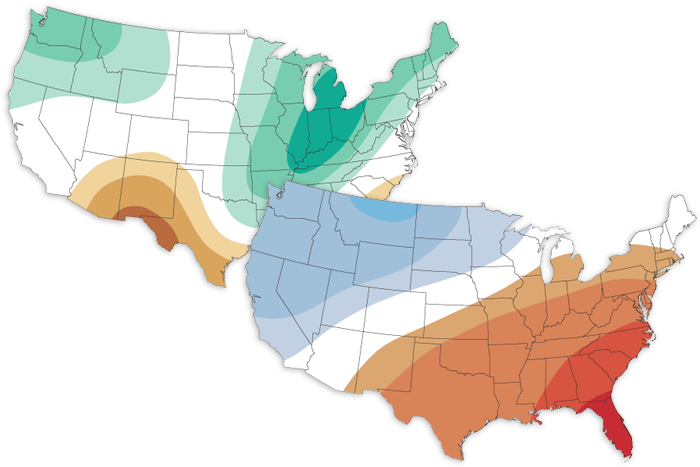The Atlantic Meridional Overturning Circulation (AMOC) is a key component of global climate. A new study shows that, since 1980, AMOC has had periods of strengthening and weakening, although the magnitudes of change are uncertain.
It's too soon to tell whether this winter's double-dip La Niña will become next winter's three-bean salad. But our blogger tells us what's on the menu this spring.
Below-average precipitation across the West led to an expansion of drought.
A new study shows a link between ENSO variations in the Pacific, and anomalies in the Florida Current three months later. This finding may give scientists a three-month lead time to better predict coastal sea level anomalies and possibly extreme weather events.
A new study concludes that, in southwestern North America, 2000–2021 was the driest 22-year period since at least the year 800. The study used tree rings to reconstruct past climates, including periods of megadroughts occurring between 800 and 1600.
Methyl bromide is an ozone-depleting trace gas currently emitted mostly from natural sources. New research suggests a strong correlation between methyl bromide variability and El Niño Southern Oscillation (ENSO) events, particularly ENSO-driven biomass burning.
A new video shows the efforts of NOAA’s Atlantic Oceanographic and Meteorological Laboratory coral researchers to document climate-driven impacts on coral reefs in Dry Tortugas National Park.

The March 2022 climate outlook favors a warmer-than-average month for the eastern/south-central US, a cooler-than-average month for the western/north-central US, and a wetter-than-average month for the Great Lakes.
After a year and a half of coordination and planning, the Hurricane and Ocean Testbed (HOT) has been successfully launched in the newly designed William M. Lapenta Laboratory. This testbed establishes a physical and virtual collaboration space for researchers and forecasters.
Understanding how dust moves through the atmosphere will be important as scientists try to predict how climate change will influence weather patterns. New research suggests that dust particles spur the formation of cirrus clouds.